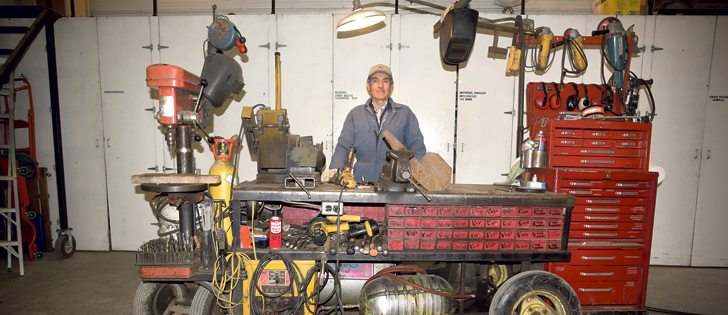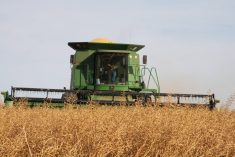SUMMERLAND, B.C. — We’ve all been there. Head out across the yard to do equipment maintenance, lugging the tools we think we’ll need for the job, but we barely get started and we discover we need a different tool.
So we trudge back across the yard to retrieve the item we need. Hopefully, that will be it this time. But many times, it’s not. Sometimes it’ll take two or three more trips back to the shop for tools before the job is finished.
Read Also

Crop quality looks good this year across Prairies
Crop quality looks real good this year, with the exception of durum.
Glen Wasmuth is intimately familiar with the problem.
The producer from Battleford, Sask., thought he found the solution years ago after reading an article in a farm publication about a mobile workbench, but Wasmuth had grander things in mind.
“I thought I’d go the full mile, you know, and have pretty well everything on there,” he said.
Wasmuth’s farm has one small, heated shop and a Quonset, where most large machinery is stored.
Trips back and forth between the two can mean a lot of wasted time if he isn’t properly prepared.
“You know how it is. No matter what you take, you always find you need something else,” he said.
“I thought, ‘a person is always running for tools or running for another piece of equipment,’ so I thought I’d just take everything.”
Wasmuth’s workbench holds a five horsepower compressor and an air tank fitted with a quick coupler for rapid changes, a welder, a cutting torch, a drill press, a vice, grinders and a cut-off saw.
He also installed a full mechanic’s tool chest, just to make sure he’d have every possible permutation of tool, part and clamp he might need.
But that still wasn’t enough, so Wasmuth extended the chest out over the back wheels of the workbench to fit more.
The workbench is equipped with its own breaker box, so the welder, the cut-off saw and the compressor all have their breakers. The unit is also wired for welder plugs, and two separate circuits allow for more capacity.
“That way you can plug in the front and on the back of the bench.”
The unit is 10 feet long, including the hangover expansion to the mechanics chest at the rear. It has 12-inch wheels on the back and eight-inch wheels on the front. The cutting torch and drill press sit above the front wheels.
There’s also an attached overhead work light.
Wasmuth is not sure how much it weighs but said it is more than a tonne.
“One person can pull it on concrete, and if we take it across the yard, we usually pull it with a quad.”
The bench has six feet of work space, which some farmers might consider small, but Wasmuth said it’s usually all he needs if he keeps things well organized.
He said some shops with large amounts of workbench space often don’t have any more room than that anyway because benches can become storage areas for all kinds of odds and ends.
“We have to keep it uncluttered.”
For Wasmuth, this workbench serves as more than a secondary mobile work space. It is the only workbench he has on his farm. It also comes in handy as a stable platform to stand on while carrying out jobs at intermediate heights.
“At this time of year, the shop gets very congested, so the workbench is on the opposite side of the shop and we have to pull it around,” he said during harvest.
“But with a stationary workbench, a guy would be making all kinds of trips to get to the right equipment.”















